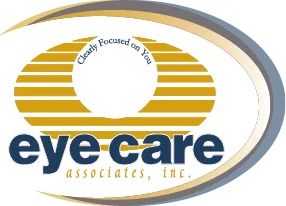Pediatric Eye Care Available
At Eye Care Associates Inc., we believe that every child deserves the gift of clear vision and healthy eyes. Our dedicated team of eye care professionals specializes in pediatric eye care at our multiple locations serving Austintown, Youngstown, Howland, Poland, and East Liverpool, OH. From comprehensive eye exams to selecting the perfect pair of glasses, we are committed to providing compassionate care tailored to the unique needs of children.
Why Pediatric Eye Care Matters:
Pediatric eye care is essential for ensuring optimal vision development and detecting any potential vision problems early. Undiagnosed vision issues can impact a child's learning, development, and overall quality of life. By addressing vision problems early, we can help children thrive and reach their full potential.
Services Offered for Pediatric Eye Care:
- Comprehensive Eye Exams: We offer comprehensive eye exams tailored to children of all ages. Our experienced optometrists use child-friendly techniques and equipment to assess visual acuity, eye alignment, eye health, and overall visual development.
- Vision Screening: Vision screening is essential to pediatric eye care and helps identify potential vision problems that may require further evaluation. We recommend regular vision screenings for children from infancy to childhood and adolescence.
- Prescription Glasses: If your child needs vision correction, our team can help you select the perfect pair of glasses. We offer a wide range of stylish and durable eyewear options for children, including flexible frames, impact-resistant lenses, and fun designs that kids love.
- Specialized Treatments: Our team is experienced in diagnosing and treating a variety of pediatric eye conditions, including amblyopia (lazy eye), strabismus (crossed eyes), and refractive errors (nearsightedness, farsightedness, and astigmatism). We work closely with parents and caregivers to develop personalized treatment plans that meet each child's individual needs.
Choosing the Right Glasses for Your Child:
When selecting glasses for your child, it's essential to consider factors such as:
- Frame Durability: Look for frames made from durable materials that can withstand the wear and tear of active play.
- Comfort: Choose glasses that fit comfortably and securely without pinching or slipping.
- Style: Involve your child in selecting and choosing frames that reflect their personality and style preferences.
- Lens Protection: Opt for impact-resistant lenses and consider adding scratch-resistant and UV-protective coatings for durability and eye protection.
When to Schedule Your Child's Eye Exam:
Children should have their first comprehensive eye exam between 6 and 12 months. After the initial exam, we recommend scheduling regular eye exams at least once every two years or as advised by your eye care professional. However, if you notice any signs of vision problems or if your child is at risk for certain eye conditions, it's essential to schedule an eye exam as soon as possible.
Schedule Your Child's Eye Exam Today:
Give your child the gift of clear vision and healthy eyes with pediatric eye care at Eye Care Associates Inc. Call us at (330) 746-7691 to schedule an appointment at one of our convenient locations. Trust your child's eyes to the experts dedicated to providing compassionate care and promoting lifelong ocular health.
